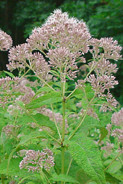 Loading... Please wait...
Loading... Please wait...- Home
- SEEDS
- SEED MIXES
- BUY PLANTS
- Info Request
-
Educational Videos
- Greenhouse Transplanting Demonstration
- Native Seed Cleaning demonstration at Ion Exchange Native Seed and Plant Nursery
- Attracting Butterflies
- Bidens - Bidens cernua Harvest Video
- Big Blue Stem Harvest
- Butterfly Milkweed Video
- Button Blazingstar - Liatris aspera Video
- Buttonbush - Cephalanthus occidentalis Video
- Canada Anemone - Anemone canadensis Harvest Video
- Cardinal Flower - Lobelia cardinalis Video
- Control Burn - Wildflower Field
- Cream Gentian - Gentiana flavida
- Culver's Root - Veronicastrum virginicum Video
- Cup Plant - Silphium perfoliatum Video
- Dormant Seeding | Planting
- Earthyman's Favorite Wildflowers Video
- Eco-Friendly Golf Course Seed Mix
- Floating Islands
- Fringed Loosestrife - Lysimachia ciliata Video
- Giant Yellow Hyssop - Agastache nepetoides Video
- Indiangrass - Sorghastrum nutans Video
- Iowa Prairie Partner Program
- Leadplant - Amorpha canescens (Potted) Video
- Meadow Blazingstar - Liatris ligulistylis
- Midland Shooting Stars - Dodecatheon meadii Video
- Native Plant Nursery Field Irrigation Experiment
- Nodding Onion - Allium cernuum Video
- Ohio spiderwort - Tradescantia ohiensis Video
- Old Man's Beard - Clematis virginiana blooms Video
- Oxeye Sunflower - Heliopsis helianthoides Video
- Prairie Spiderwort - Tradescantia bracteata
- Purple Coneflower - Echinacea purpurea Video
- Rain Garden or Water Garden Video
- Rattlesnake Master - Eryngium yuccifolium Video
- Riverbank Stabilization - Wetland Plants
- Rose Mallow - Hibiscus militaris Video
- Rosinweed - Silphium integrifolium Video
- Royal Catchfly - Silene regia
- Showy Tick Trefoil - Desmodium canadense Video
- Sneezeweed - Helenium autumnale Video
- Swamp Betony - Pedicularis lanceolata Video
- Swamp Milkweed - Asclepias incarnata Video
- Sweet Blackeyed Susan - Rudbeckia subtomentosa Video
- Tall Coreopsis - Coreopsis tripteris Video
- Urban Butterfly Garden
- Wild Bergamot - Monarda fistulosa Video
- Wild Geranium - Geranium maculatum Harvest
- Wild Goldenglow - Rudbeckia lanciniata Video
- Wild Petunia - Ruellia humilis Harvest Video
- Woodland Knotweed - Polygonum virginianum Video
- Yellow Coneflower - Ratibida pinnata Video
- Blog
- Resources
- Policies
Contact Us
Phone:
563-419-0837
or 563-535-7231
Email:
hbright@ionXchange.com
Browse Products
Add to Wish List
You Recently Viewed...
Our Newsletter
Product Description
Joe Pye Weed, Spotted Joe Pye Weed, King-of-the-Meadow, Queen-of-the-Meadow, Thoroughwort
Perennial, 2 - 6 feet, stem purple or purple-spotted, purple-brown flowers in flat-topped clusters bloom from July through September. Found in wet meadows from the mountains of North Carolina westward to Nebraska and ranging through British Columbia.
Greek, from the name of the King of Pontus, Eupator and maculatum from the Latin meaning spotted, referring to the leaves.
Native Americans made a tea from the entire plant as a diuretic and for treating dropsy, painful urination, gout, kidney infections and rheumatism. Tea made from the root was used to treat fevers, colds, chills, painful womb after childbirth, diarrhea, liver and kidney trouble, and as a wash for rheumatism. The name comes from a real historical personage by the name of Joe Pye, a 19th century Caucasian/Indian medicine drummer who was well known for using the root of this plant to induce sweating and help break fevers, especially typhus.
| Sun Exposure | Prairie, Savanna |
| Soil Moisture | Wet, Wet Mesic |
| Bloom Time |
Summer, Fall June, July, August |
| Bloom Color | Pink |
| Max Height | 5 feet |
| Wetland Code | OBL |
| Germ Code | C(30), D |
| Seeds Per Packet | 400 |
| Seeds Per Ounce | 95,000 |
Edible Uses: Unknown
Medicinal Uses: A tea made from the whole herb is diuretic. It is used in the treatment of kidney complaints, painful urination, rheumatism etc. The leaves and stems are harvested in the summer before the flower buds open, and are dried for later use. A tea made from the roots is used in the treatment of fevers, colds, kidney and liver complaints, rheumatism etc. It is said to have a tonic effect upon pregnant women and is also said to induce sweating. Externally, a decoction of the roots is used as a wash on rheumatic joints. The roots are harvested in the autumn and dried for later use.
Other Uses: The stems have been used as straws.
Herbal Uses: Unknown












